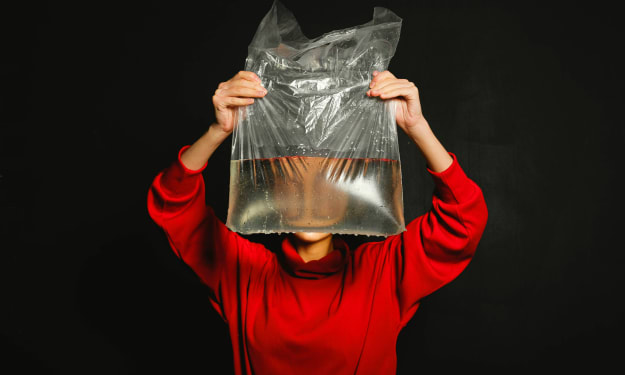Clothes Talk
How writing about fashion for a living made me

William Shakespeare is my fashion idol.
It's not because of his puffy pantaloons or saggy tights or frilly Elizabethan collars though I could make a solid argument for a pantaloon revival in the New Year. They're probably more comfortable than yoga pants. And one could discreetly carry snacks in the folds of fabric. Have you ever tried to do a downward dog with a full-sized candy bar stashed in the tiny pocket stitched into the waistband of most yoga pants? Don't.
Back to Shakespeare. Say what you want about his sonnets and plays. It's his fashion writing that has real impact on my closet. What! You didn't know the Bard was practically the Diana Vreeland of his time? While the stylish editor of Harper's Bazaar and Vogue gave us such idioms as, "Pink is the navy blue of India."And "Fashion must be the most intoxicating release from the banality of the world." It was Shakespeare who penned perhaps the most timeless fashion advice ever put to paper when he wrote “. . . apparel oft proclaims the man.”
This advice from Hamlet, given by a father to a son who was about to head to France, still holds true centuries later. (Seriously, consider it before boarding a plane to Paris.) It’s usually interpreted as “clothes make the man” but I think that’s almost the opposite of what the father was saying.
Granted, I know next to nothing about Shakespeare but he did write in English which just happens to be the one and only language in which I can (fairly) confidently claim fluency, so I am going to take him at his word, specifically this word; proclaims. Proclaims is defined as “declares publicly” or “gives an outward indication.”
So clothes don’t make the man but they say a lot about him. (Not to make you paranoid, but your clothes are talking about you right now. Do you have any idea what they're saying? Trust me, everyone else does.)
When I wrote about fashion for a daily newspaper, one of my favorite assignments was to go out with a photographer to ask people what they were wearing in their everyday lives, and why. The first one we ever did was in January 1998. Photographer Ross Hamilton and I wandered to an urban mall a few blocks from the newsroom in downtown Portland, Oregon.
I stopped people who were dressed in stylish ways and just talked with them. I saw a cute, young, semi-tough-looking inked guy. I asked about the pork pie hat he wore. He said he was taking care of it for “a friend in the pen,” as in penitentiary. That was not an answer I could have predicted. I was hooked. It became a regular feature.
We called it Found Fashion, like found art. At some point, we changed it to Street Fashion. For several years, I’d go out on random style hunting expeditions with different photographers. Most times, we'd simply meander around the city. Other times, I’d choose a specific place or event such as an indie fashion show or fancy fundraiser where a large gathering was guaranteed to be dressed.
My colleague Ross Hamilton was brilliant at it and always made his subjects feel confident and look great. Plus, he also seemed to genuinely enjoy their stories as much as I did. It was fascinating to learn why people wore what they wore.
I remember talking with a very cool looking silver-haired woman dressed in what appeared to be a perfectly tailored menswear suit and dress shirt. In an era of spiky high heels, she strode about comfortably in black brogue shoes. She was an attorney who adapted the look early in her career to establish herself as an equal in a game then still pretty much ruled by men.
A beautiful young man who'd just moved from Minneapolis said he never felt fully dressed without a top coat, hat and gloves and was still adjusting to the more temperate, and casual, Northwest. He didn't understand the region's reluctance to feel sharp.
Once I talked with a darling high school senior dressed like a 1960s London Mod in mini skirt and boots. She said she typically wore slumpy T-shirts and jeans so felt a little awkward about being stopped for her style. Turned out, that morning her mother said she looked especially cute and should dress like that more often. I inadvertently proved that mother knew best.
Working on that semi-regular feature helped me appreciate fashion as a genuine form of self-expression more than any 7th Avenue designer could. It also brought me back to another Shakespearean quote: All the world’s a stage, and all the men and women merely players.
Why dress for a bit part?
About the Creator
Vivian R McInerny
A former daily newspaper journalist, now an independent writer of essays & fiction published in several lit anthologies. The Whole Hole Story children's book was published by Versify Houghton Mifflin Harcourt, 2021. More are forthcoming.






Comments
There are no comments for this story
Be the first to respond and start the conversation.